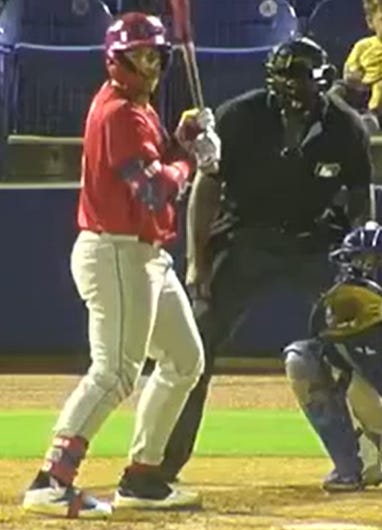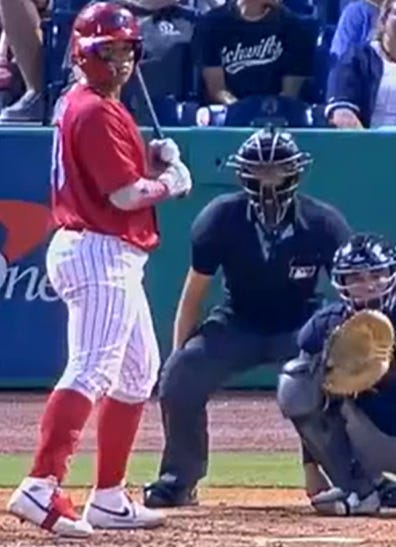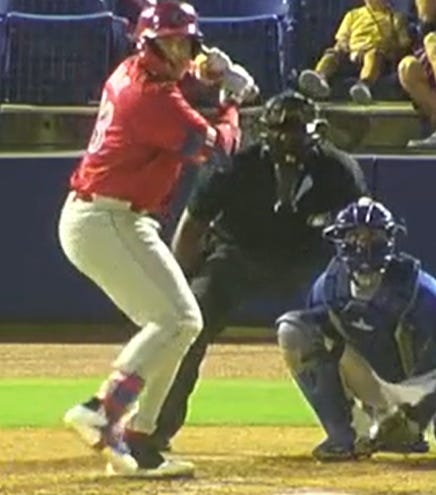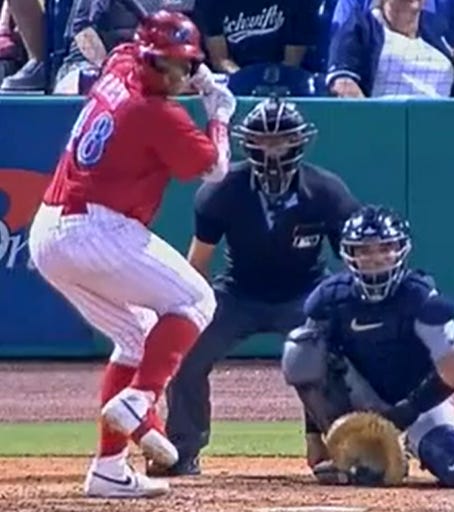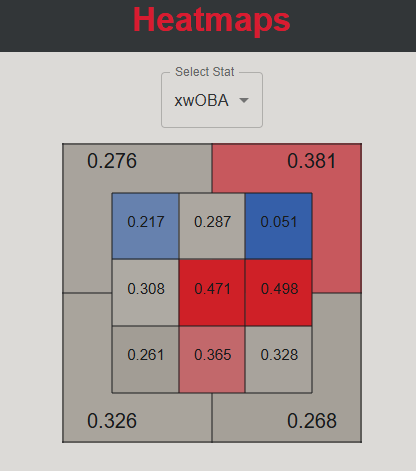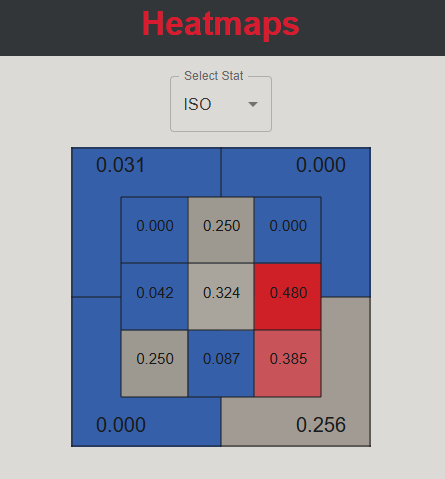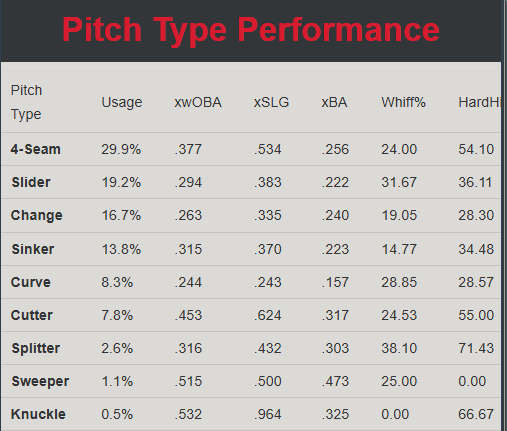Keep Your Eye On Eduardo Tait
One of the top overall prospects in baseball
Eduardo Tait was part of the package that sent Jhoan Duran to the Philadelphia Phillies, alongside RHP Mick Abel, who has already made his MLB debut this season. Tait brings a very advanced skill set and offensive prowess for his age, and he’s quickly becoming one of the more intriguing young hitters in the minors. Before diving into his complete profile, it’s worth taking a closer look at his swing.
He is known among evaluators for his plus-plus raw power, and it all starts with the way he uses his lower half. Tait generates a powerful unwind from his coiled position, firing his hands while activating his hips to drive the baseball with authority.
Stance Changes
He has his hands slightly higher before his load, and he's sinking slightly more into his backside while opening his stance a little bit. You can also see them when he starts to take his swings from year to year.
Load Changes
The load change that I was highlighting can be seen here before he starts to uncoil. He has opted for a mid-air toe tap compared to a slight leg kick. His front half also looks quieter, which I think is a positive when looking at his swings in 2024.
Tait has played in both A and A+ this year, though only 11 games combined between the two levels with Philadelphia and Minnesota. Across 86 total games, he’s posted 12 HR, 46 RBI, 58 runs, an 8.2% walk rate, an 18.0% strikeout rate, a .183 ISO, a .254 batting average, a .318 OBP, a .437 SLG, a .352 wOBA, and a 107 wRC+. He’s producing solid in-game power while striking out less than 20%, which is impressive for a hitter this young. For most of this breakdown, the focus will be on his A-ball numbers, given the small sample at A+, but I will revisit later in the year.
He is the only player in the Florida State League with at least 10 home runs and 15 doubles this season, and he’s the youngest player in all of MiLB to do so. His batted-ball profile has remained consistent year-over-year, with nearly identical line drive rates (20.3% in 2024 vs. 21.8% in 2025), a 1.4% drop in ground ball rate, and a very similar fly ball rate (40.1% vs. 39.8%). His pull rate dropped slightly from 47.6% to 45.0%, cent% stayed essentially the same (23.2% to 23.8%), and his opposite field contact ticked up from 29.2% to 31.2%. His strikeout rate has also improved, down 1.6% from last season.
One of the more notable parts of his profile is how his advanced underlying metrics in A-ball stack up to his actual production. His xwOBA sits at .326 (74th percentile), his xBA at .241 (75th), and his xSLG at .426 (87th). While these numbers aren’t elite, they highlight the strong quality of contact he makes. Tait ranks in the top 24% in average exit velocity (89.5 MPH), top 15% in 50th percentile EV (92.7 MPH), and top 9% in 90th percentile EV (105.9 MPH). He’s also posted a well above-average barrel rate (9.9%), hard-hit rate (41.4%), and Pull AIR% of 21.8%.
While he posted a bottom 8% chase rate, Tait didn’t whiff at a high clip. Most of his damage in A-ball came on pitches in zones 5 (.471) and 6 (.498), while still producing above-average results in zone 8 (.365) and just slightly above his lower production in zone 1. His ISO damage was concentrated in zones 6 and 9, showing where his power truly plays.
He did show some concerns on non-FAs; however, that is going to be a typical development with an 18-year-old who is still getting used to professional baseball, especially with his power profile.
4-Seam: .377 wOBA, .534 xSLG, 54.1% H-H%
Cutter: .452 wOBA, .624 xSLG, 55.0% H-H%
Overall, Tait is showing why he’s one of the more exciting young hitters in the minors. The stance and load tweaks have helped him stay more balanced while still tapping into that ++ power, and the advanced metrics back up what we’re seeing on the field. He’s producing at a high level for his age, handling A and A+ ball arms, and showing signs of even more in the tank. I’ll be keeping an eye on how he adjusts in A+ the rest of the year, but right now, he’s trending in an excellent direction.
Data Credit: ProspectSavant and FanGraphs



